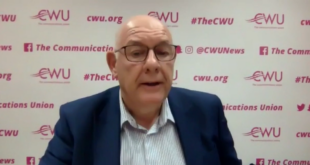Over the past 12 months, a stream of blue-chip dividend champions has announced dividend cuts, walloping income investors. Companies such as Vodafone, Royal Mail and Marks & Spencer, which were once some of the biggest dividend payers in the UK, have all decided to slash their distributions recently. And it looks as if there are further reductions on the horizon as well. Indeed, BT has recently said that it could reduce its payout to accelerate investment in its fibre networks across the UK.
Aviva (LSE: AV) has said its 7.8% dividend yield is safe for the time being, but some City analysts are sceptical. They believe the group’s new CEO, Maurice Tulloch, has this yield in his sights.
A plan for growth
At the beginning of June, Tulloch announced his new strategy for Aviva. He is looking to cut 1,800 jobs to save £300m of costs a year and “crack the complexity” of the business, which he says has been a drag on growth. As part of his efforts to streamline the business, Tulloch is also splitting Aviva’s core UK business into two parts, general insurance and life insurance, moving back to the model the group used before the divisions merged in 2017.
If he succeeds in his goal, Tulloch’s targeted cost savings could help boost Aviva’s operating profit by around 10%, a substantial improvement. This should free up more cash to both reinvest in the business, and fund shareholder returns.
On the shareholder returns front, the company has said it will be maintaining its dividend policy for the foreseeable future, which is good news. However, both Vodafone and Royal Mail both said the same thing before they slashed their payouts, so I’m inclined to take this statement with a pinch of salt.
That said, looking at Aviva, the enterprise does seem to be in a much stronger position than both of the companies mentioned above. Current City figures suggest the dividend will be covered 1.9 times by earnings per share for 2019, giving plenty of headroom. On a cash basis, the distribution also looks well covered. The dividend cost the company around £1.2bn in total last year, compared to cash generated from operations of around £6bn.
So the numbers suggest Aviva’s payout is safe for the time being, but it really all comes down to the path management decides to take from here. Cutting costs and improving efficiency will help improve margins, although it won’t jack up growth. Aviva will need to invest to generate growth, and this is where management could run into cash flow problems. Spending on technology, for example, has ballooned in recent years, rising from around £350m a year in 2014, to £600m for 2018. Aviva can’t cut too much here because it risks being left behind. There are also security concerns to consider.
The bottom line
Overall it looks to me as if Aviva’s dividend is safe for the time being. The payout is well covered, and while spending on growth might be rising, there’s a wide buffer between what the company is paying out and the level at which the dividend becomes unsustainable.
More reading
Rupert Hargreaves owns no share mentioned. The Motley Fool UK has no position in any of the shares mentioned. Views expressed on the companies mentioned in this article are those of the writer and therefore may differ from the official recommendations we make in our subscription services such as Share Advisor, Hidden Winners and Pro. Here at The Motley Fool we believe that considering a diverse range of insights makes us better investors.
Motley Fool UK 2019
Source link



